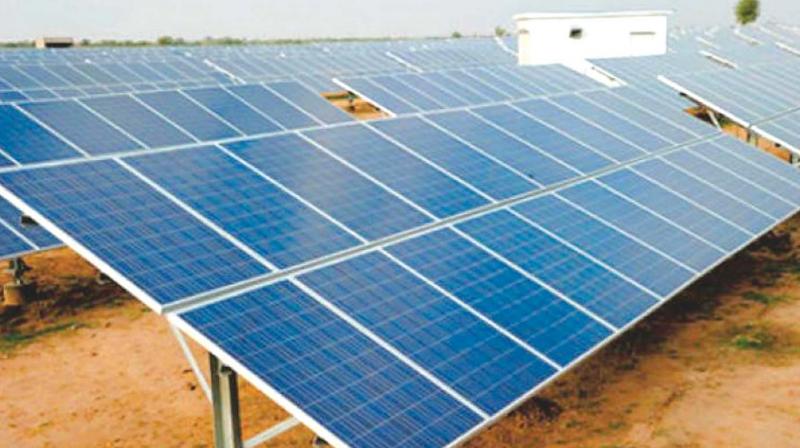Kerala: School rooftops soon to turn solar plants

THIRUVANANTHPAURAM: Eight networked solar power projects with a total capacity of 1.65 MW will be installed on roof tops of schools and government buildings during this year. Networked solar projects refer to a series of roof-top plants upon buildings that fall under one authority, say for instance various offices under a district panchayat. The preliminary works on all these projects have already started; in the case of some, the work orders have already been granted, and in the case of others the tender proceedings are on.
There are two main advantages to the network solar project. The most obvious being that it will bring down the electricity costs of government buildings and schools. The other big gain is that buildings under a network are considered as a single unit. And therefore, the power generated by all the roof-top plants in the network (44 buildings under Kozhikode District Panchayat, for instance) is sold to the KSEB grid as from a single unit; the power a networked unit sells to KSEB is adjusted in the power bills of all the buildings.
“The power generated in the rooftops of buildings in the network that have large roof space is considered coming from a single source,” a top KSEBL official said. So it would not matter if one building has the space to mount just a single one-kilowatt plant. Its lack of space will be more than compensated by another building within the network that has space to install more solar plants. In short, this networked system helps bring down the power cost of offices that have less space to install solar plants, too.
The eight networked solar projects include installing plants in various buildings under six districts panchayats: Kozhikode (44 buildings), Kannur (29 buildings), Malappuram (11 buildings), Kasargod (3 buildings), Kollam (4 buildings), Kottayam (one building). The other two networks are four buildings under the Central government and local bodies in the southern zone, and two buildings under Attingal municiplality. Besides offices, buildings under district panchayats include hospitals and schools. The DPR of another seven projects, with a larger installed capacity, have already been submitted to Anert. These include nearly 1 MW of solar power from nine collectorate buildings across the state.

